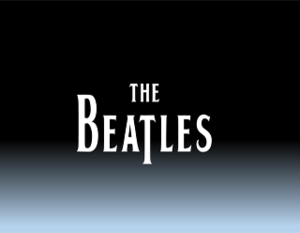Music
Sounds from Nature
http://www.naturesoundmap.com/ Added: 17 Apr 2014 Contributor: Scoilnet Resource type: Audio / VideoNature soundscapes and wildlife sounds from all over the planet. Shows a map of the world with various hot spots containing sounds from animals, birds and nature.
View full descriptionHow it maps to the curriculum
Strand: Listening & Responding
Strand unit: Listening and responding to music
Suggestions for use: Play this in class - to identify the differnet types of sounds and pitch of sounds. Can also help the children identify parts of the world. You could ask the children to tell you something about the country in which the sound is from.
Strand: Listening & Responding
Strand unit: Listening and responding to music
Suggestions for use: Play this in class - to identify the differnet types of sounds and pitch of sounds. Can also help the children identify parts of the world. You could ask the children to tell you something about the country in which the sound is from.
Strand: Human Environments
Strand unit: People and Other Lands
Suggestions for use: Play this in class - to identify the differnet types of sounds and pitch of sounds. Can also help the children identify parts of the world. You could ask the children to tell you something about the country in which the sound is from.
Strand: Human Environments
Strand unit: People and Other Lands
Suggestions for use: Play this in class - to identify the differnet types of sounds and pitch of sounds. Can also help the children identify parts of the world. You could ask the children to tell you something about the country in which the sound is from.
Mozart Piano Concerto in A Major
https://www.scoilnet.ieuploads/resources/12933/12570.pdf Added: 29 Sep 2014 Contributor: Scoilnet Resource type: Guide/notesDetailed notes from the Music Curriculum Support team on the set work for the Leaving cert exam. Includes sections on the background to the work, an analysis of the three movements and an examination of the main themes within the work.
View full descriptionHow it maps to the curriculum
- SC
- Music
Strand: Set Works
Suggestions for use: Can be used in class prep. Sections could also be printed out for students.
The Beatles
https://www.scoilnet.ie/go-to-primary/theme-pages/history/thebeatles/ Added: 15 May 2018 Contributor: Dave O'Mahony Resource type: Audio / VideoThis collection of resources tracks the formation, success and eventual break up of one of the world's most successful bands. You will also find activities, quizzes and resources relating to the Beatles.
View full descriptionHow it maps to the curriculum
- 5-6
- SESE History
Strand: Life, Society, Work & Culture
Strand unit: Language & Culture: 19th & 20th Century
Content objective: This resource should enable a child to:
- become familiar with aspects of the lives of these people
Course B Prescribed Works
https://www.scoilnet.ieuploads/resources/12930/12567.pdf Added: 29 Sep 2014 Contributor: Scoilnet Resource type: Guide/notesPresentation for the Music Teachers Conference from AM Higgins on the prescribed works for the 2014, 2015 and 2016 Leaving Cert exams. Presents discussion and study points around the works of Berlioz, Deane, Mozart and The Beatles.
View full descriptionHow it maps to the curriculum
- SC
- Music
Strand: Set Works
Suggestions for use: Teacher use only. Useful points when planning class on the set works. Good for recapping the points that should be emphasised.
Edpuzzle: 'Un Bal' from 'Symphonie Fantastique' (Berlioz)
https://edpuzzle.com/media/5ebac031e8baa13f1b70a629 Added: 28 Sep 2020 Contributor: PDST Resource type: Guide/notes / Audio / VideoAn analysis of the 2nd movement of Berlioz's symphony, conducted here by Herbert von Karajan. Although it is in Edpuzzle format, it is a series of notes, rather than an assessment activity.
View full descriptionHow it maps to the curriculum
- SC
- Music
Strand: Aural Skills
Suggestions for use: One of the set works for Leaving Cert Music, Course B. A step-by-step analysis of themes, instrumentation, keys and musical features. Suitable for 5th years who are studying the work for the first time and 6th years who are revising it.
Irish Music Notes
https://www.scoilnet.ieuploads/resources/12927/12564.pdf Added: 29 Sep 2014 Contributor: Scoilnet Resource type: Guide/notesComprehensive introduction to Irish music from the Curriculum Support Team for Music. Details the history of traditional Irish music, song and dance with particular attention to changes over time. The first part of the document looks at dance music, harping, singing and actual set dancing while the second section looks at the external and internal changes to the tradition as well as looking at regional styles and the aural tradition.
View full descriptionHow it maps to the curriculum
- JC
- Music
Strand: 1. Procedural Knowledge
Strand unit: 13. Compare Irish Traditional / Folk Music
Pen-drumming: A Practical Music-Making Alternative
https://www.scoilnet.ieuploads/resources/34647/34401.pptx Added: 19 Oct 2020 Contributor: PDST Resource type: Demonstration / Guide/notes / Audio / Video / PresentationThis PowerPoint suggests how to introduce pen-drumming in the classroom with a view to allowing students to continue to experience practical music-making and develop rhythmic skills under current restraints (2020). It continues to look at how such activity can support other areas of learning in the class.
View full descriptionHow it maps to the curriculum
- JC
- Music
Strand: 2. Innovate and Ideate
Strand unit: 6. Design a Rhythmic / Melodic Ostinato
Suggestions for use: Pen-drumming is effective in encouraging confidence in group and individual music-making. It enables students to explore rhythms, ostinati, layering, dynamics, tempo, pulse and form. It allows students to look at ‘effects’ in music and encourages an awareness of balance and performance critiquing in students. It’s also great fun!
Key Skills: Being Creative Communicating Working with Others Literacy Numeracy

